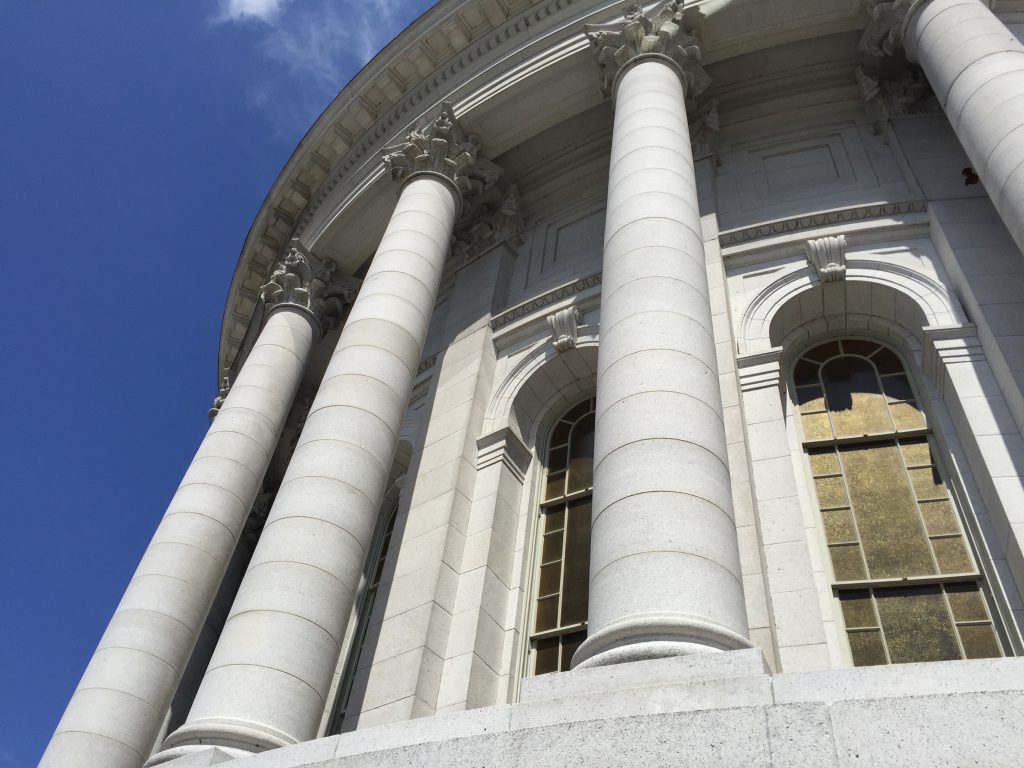Evers’ Veto Pen Gives School Districts 400 Years of Funding
Trimming budget bill text to let school districts collect an added $325 per student annually.

Wisconsin State Capitol. Photo by Mariiana Tzotcheva.
A surprise partial-veto from Wisconsin Gov. Tony Evers gives school districts the ability to collect an additional $325 per student annually for the next 402 years.
Evers expanded the additional revenue limit authority from 2024-25 in the budget passed last week by the Republican-led Legislature to 2425.
Doing so would “provide school districts with predictable long-term increases for the foreseeable future,” Evers said at a press conference Wednesday morning.
Budget plans forwarded by Wisconsin’s Republican legislators would have provided the state’s public schools and additional $325 in revenue per pupil in this budget cycle. Using his broad veto powers as a scalpel, Evers sliced out bits of the budget document to extend that increase for four centuries.
The $325 amount is still about $75 per student less than what schools would need to keep up with the inflation rate, which is at 4.05 percent, compared to 4.93 percent last month and 8.58 percent last year, according to the consumer price index.
But this is still a substantial win for Wisconsin School Districts, said Sara Shaw, a senior researcher with the Wisconsin Policy Forum who focuses on education.
“Even though it is not going to make up what schools did not receive over the last two years, $325 per pupil is not a small number,” Shaw said. “It is real money that will decrease in purchasing power over time. But it is meaningful.
Not the first time Evers has used veto pen to change school funding
Dan Rossmiller, executive director of the Wisconsin Association School Boards, said this is not the first time Evers has used his veto pen to provide more resources for schools.
In his first term, Evers, a former state superintendent, allowed an increase in per pupil aid over the revenue limit, Rossmiller said.
And it’s not the first time a governor has extended a limit for an unfathomable number of years. In 2019, then-Gov. Scott Walker extended a moratorium related to school spending for HVAC projects without going to referendum for 1,000 years.
Rossmiller said he was hoping for a change to revenue limits, but he wasn’t sure how Evers would get there. The governor did so by striking the number 20 and the hyphen from “2024-25” in budget documents to get to the date 2425, according to spokesperson Britt Cudaback.
“We were looking for predictable, spendable, sustainable and matching or exceeding the rate of inflation,” Rossmiller said. “Hard to know what future costs of living will be, but this is predictable for budget purposes.”
Rossmiller said one Legislature can’t bind the next, so how long revenue limits will last is unknown. Republicans are also not far off from achieving a veto-proof super majority.
“Right now this seems like this is a substantial amount, but when you look at what was given to private schools in the voucher program, $325 is kind of dwarfed,” Rossmiller said.
The state budget also included the largest financial expansion to private school choice in the program’s history.
Funding for kindergarten through eighth grade private choice schools will increase from about $8,400 per student to $9,500 per student. Funding for private choice high schools will go from $9,045 to $12,000 per student.
Additional revenue limits come from state or property taxes
Wisconsin’s public schools are funded primarily through a combination of local property taxes and state support in the form of general school aids. That means if school districts are given additional revenue limit authority, it’s funded by the state or by increasing the local tax levy, according to a January 2023 report by the Legislative Fiscal Bureau.
Jason Stein, vice president and research director of the Wisconsin Policy Forum, said in the future this could put pressure on the Legislature to increase general school aids, because without doing so, the revenue limit increases could lead to higher property taxes.
“If in the future lawmakers increase general school aids, by substantial amounts they could cover much of the property tax increases on the local level,” Stein said. “But not every budget has a $7 billion surplus.”
The state budget includes $534.3 million more in general school aids.
Last week, the Department of Public Instruction released preliminary school aid funding for the 2023-24 school year. Only about 60 percent of the state’s 421 school districts will receive more general aid than in 2022-23, while 164 districts, or 39 percent, are estimated to receive less.
Current estimates are based on the budget passed by the state Legislature and pupil count data reported by school districts to DPI. DPI calculates general school aids through a formula that uses property values in the district, enrollment and district spending.
General aid funding will likely change in October.
In fact, a lot could still change. Stein said Evers partial-veto extending revenue limit authority for the next four centuries could likely wind up in court.
Here’s what 400 years of Wisconsin school district funding means was originally published by Wisconsin Public Radio.





















